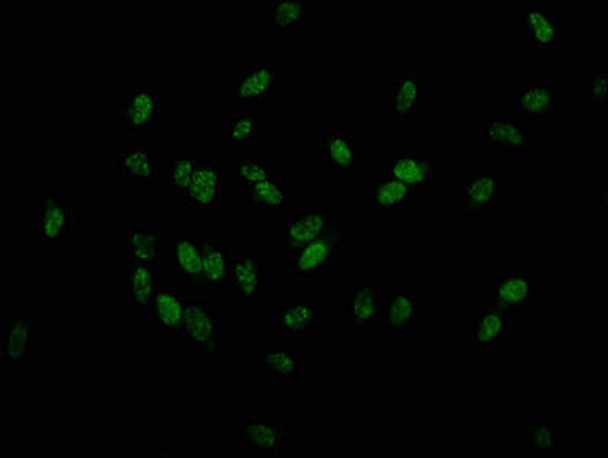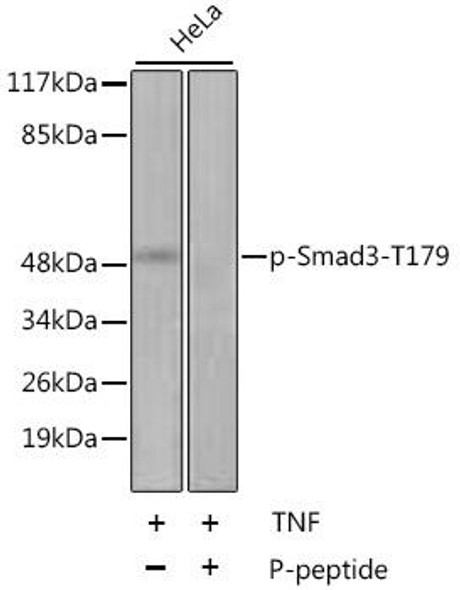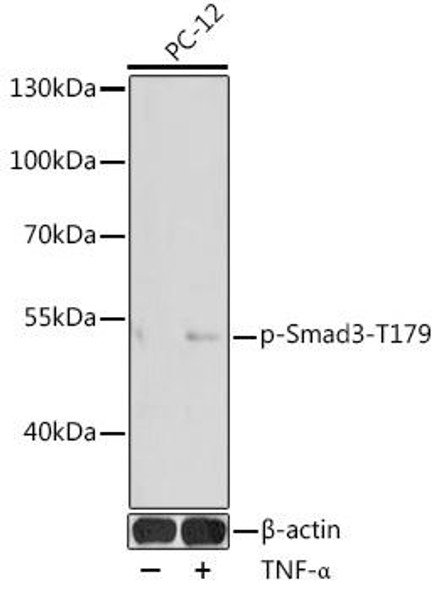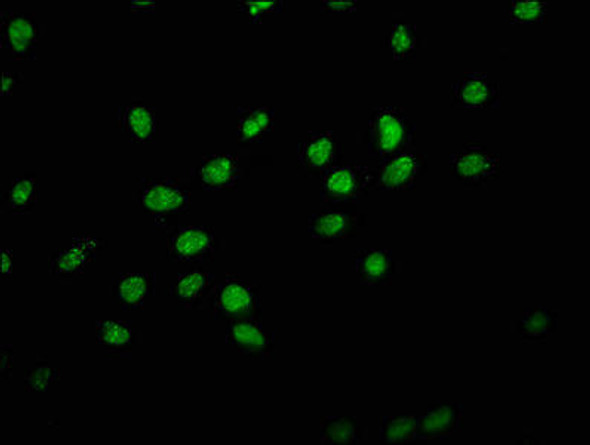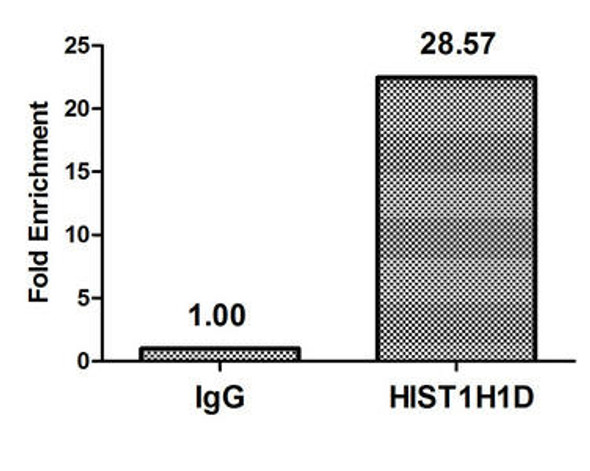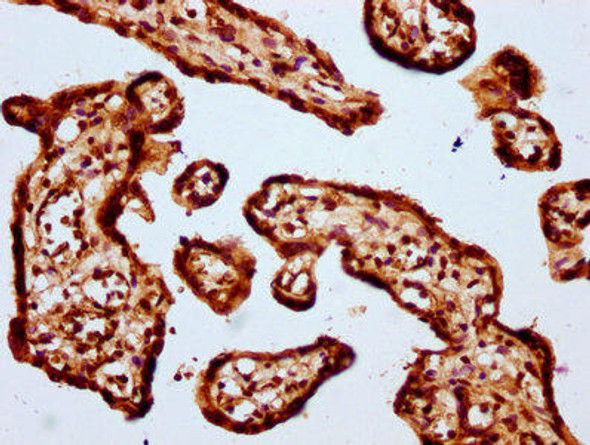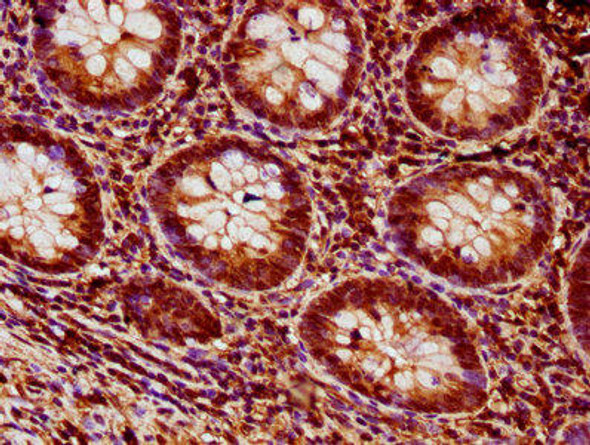Description
Phospho-HIST1H1D (T179) Antibody (PACO56708)
The Phospho-Hist1H1D (T179) Antibody (PACO56708) is an essential tool for researchers studying histone H1 phosphorylation, a crucial post-translational modification involved in chromatin structure and gene expression regulation. This antibody, produced in rabbits, is highly specific for the phosphorylated form of Hist1H1D at threonine 179 and is validated for use in immunofluorescence and immunohistochemistry applications.Histone H1 phosphorylation is known to play a role in DNA packaging and transcriptional regulation, making it a key player in epigenetic processes.
By targeting the phosphorylated form of Hist1H1D, researchers can gain insights into how this modification influences chromatin dynamics and gene expression in various cellular contexts. This antibody is a valuable tool for investigating the role of histone H1 phosphorylation in development, disease, and epigenetic regulation.
| Antibody Name: | Phospho-HIST1H1D (T179) Antibody (PACO56708) |
| Antibody SKU: | PACO56708 |
| Size: | 50ul |
| Host Species: | Rabbit |
| Tested Applications: | ELISA, IF, ChIP |
| Recommended Dilutions: | ELISA:1:2000-1:10000, IF:1:20-1:200 |
| Species Reactivity: | Human |
| Immunogen: | Peptide sequence around site of Phospho-Thr (179) derived from Human Histone H1.3 |
| Form: | Liquid |
| Storage Buffer: | Preservative: 0.03% Proclin 300 Constituents: 50% Glycerol, 0.01M PBS, pH 7.4 |
| Purification Method: | Antigen Affinity Purified |
| Clonality: | Polyclonal |
| Isotype: | IgG |
| Conjugate: | Non-conjugated |
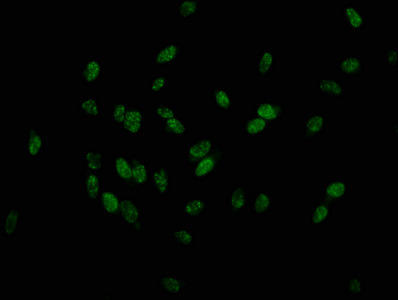 | Immunofluorescence staining of Hela cells with PACO56708 at 1:25, counter-stained with DAPI. The cells were fixed in 4% formaldehyde, permeabilized using 0.2% Triton X-100 and blocked in 10% normal Goat Serum. The cells were then incubated with the antibody overnight at 4°C. The secondary antibody was Alexa Fluor 488-congugated AffiniPure Goat Anti-Rabbit IgG(H+L). |
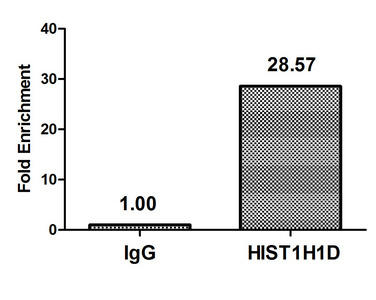 | Chromatin Immunoprecipitation Hela (4*106) were treated with Micrococcal Nuclease, sonicated, and immunoprecipitated with 5µg anti-HIST1H1D (PACO56708) or a control normal rabbit IgG. The resulting ChIP DNA was quantified using real-time PCR with primers against the beta -Globin promoter. |
| Background: | Histone H1 protein binds to linker DNA between nucleosomes forming the macromolecular structure known as the chromatin fiber. Histones H1 are necessary for the condensation of nucleosome chains into higher-order structured fibers. Acts also as a regulator of individual gene transcription through chromatin remodeling, nucleosome spacing and DNA methylation (By similarity). |
| Synonyms: | Histone H1.3 (Histone H1c) (Histone H1s-2), HIST1H1D, H1F3 |
| UniProt Protein Function: | H1D: Histone H1 protein binds to linker DNA between nucleosomes forming the macromolecular structure known as the chromatin fiber. Histones H1 are necessary for the condensation of nucleosome chains into higher-order structured fibers. Acts also as a regulator of individual gene transcription through chromatin remodeling, nucleosome spacing and DNA methylation. Belongs to the histone H1/H5 family. |
| UniProt Protein Details: | Protein type:DNA-binding Chromosomal Location of Human Ortholog: 6p21.3 Cellular Component: nuclear chromatin Molecular Function:chromatin DNA binding |
| NCBI Summary: | Histones are basic nuclear proteins responsible for nucleosome structure of the chromosomal fiber in eukaryotes. Two molecules of each of the four core histones (H2A, H2B, H3, and H4) form an octamer, around which approximately 146 bp of DNA is wrapped in repeating units, called nucleosomes. The linker histone, H1, interacts with linker DNA between nucleosomes and functions in the compaction of chromatin into higher order structures. This gene is intronless and encodes a replication-dependent histone that is a member of the histone H1 family. Transcripts from this gene lack polyA tails but instead contain a palindromic termination element. This gene is found in the large histone gene cluster on chromosome 6. [provided by RefSeq, Aug 2015] |
| UniProt Code: | P16402 |
| NCBI GenInfo Identifier: | 121925 |
| NCBI Gene ID: | 3007 |
| NCBI Accession: | P16402.2 |
| UniProt Secondary Accession: | P16402,Q2M2I2, B2R751, |
| UniProt Related Accession: | P16402 |
| Molecular Weight: | 22,350 Da |
| NCBI Full Name: | Histone H1.3 |
| NCBI Synonym Full Names: | histone cluster 1, H1d |
| NCBI Official Symbol: | HIST1H1D |
| NCBI Official Synonym Symbols: | H1D; H1.3; H1F3; H1s-2 |
| NCBI Protein Information: | histone H1.3 |
| UniProt Protein Name: | Histone H1.3 |
| UniProt Synonym Protein Names: | Histone H1c; Histone H1s-2 |
| UniProt Gene Name: | HIST1H1D |
| UniProt Entry Name: | H13_HUMAN |

